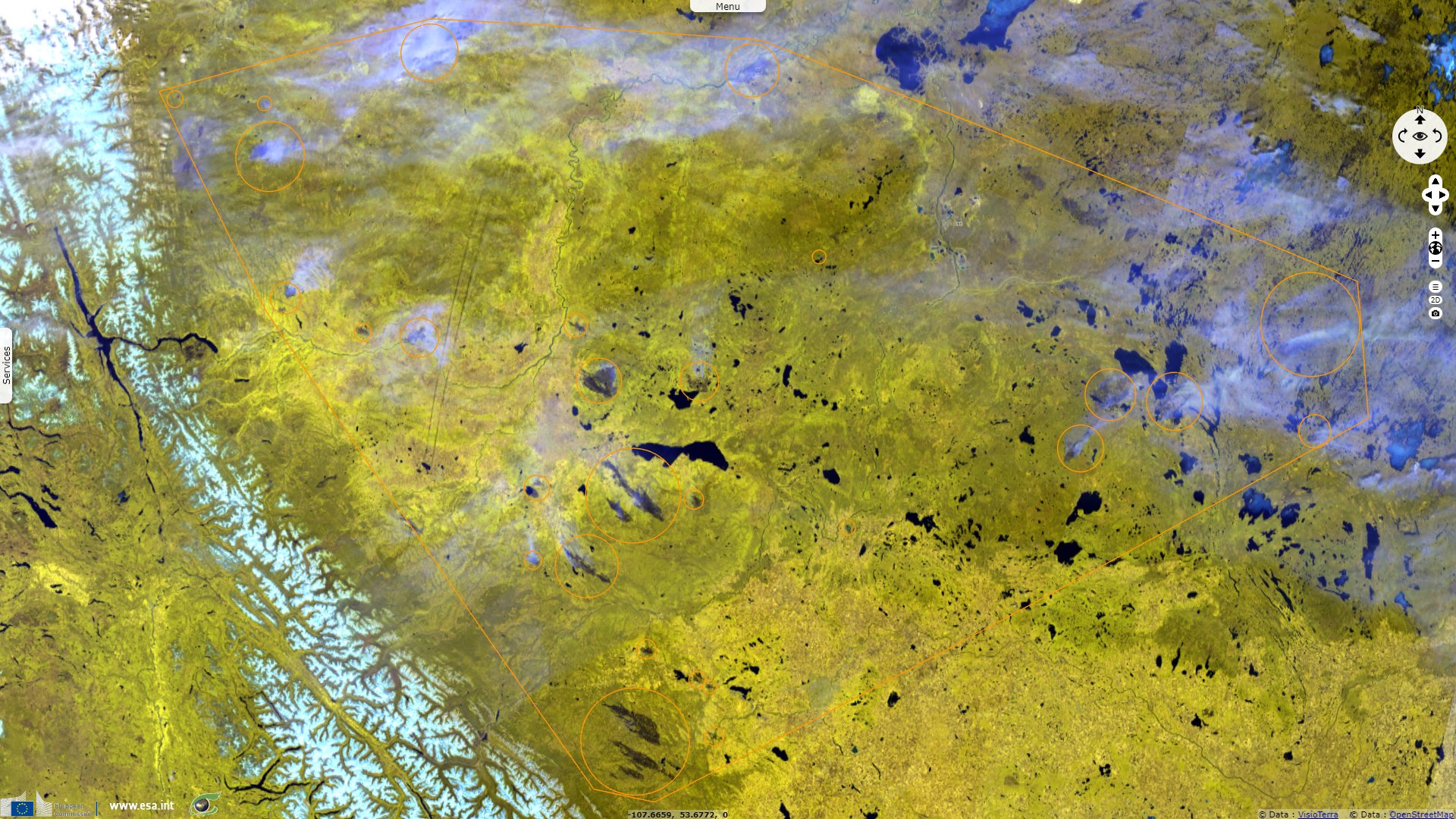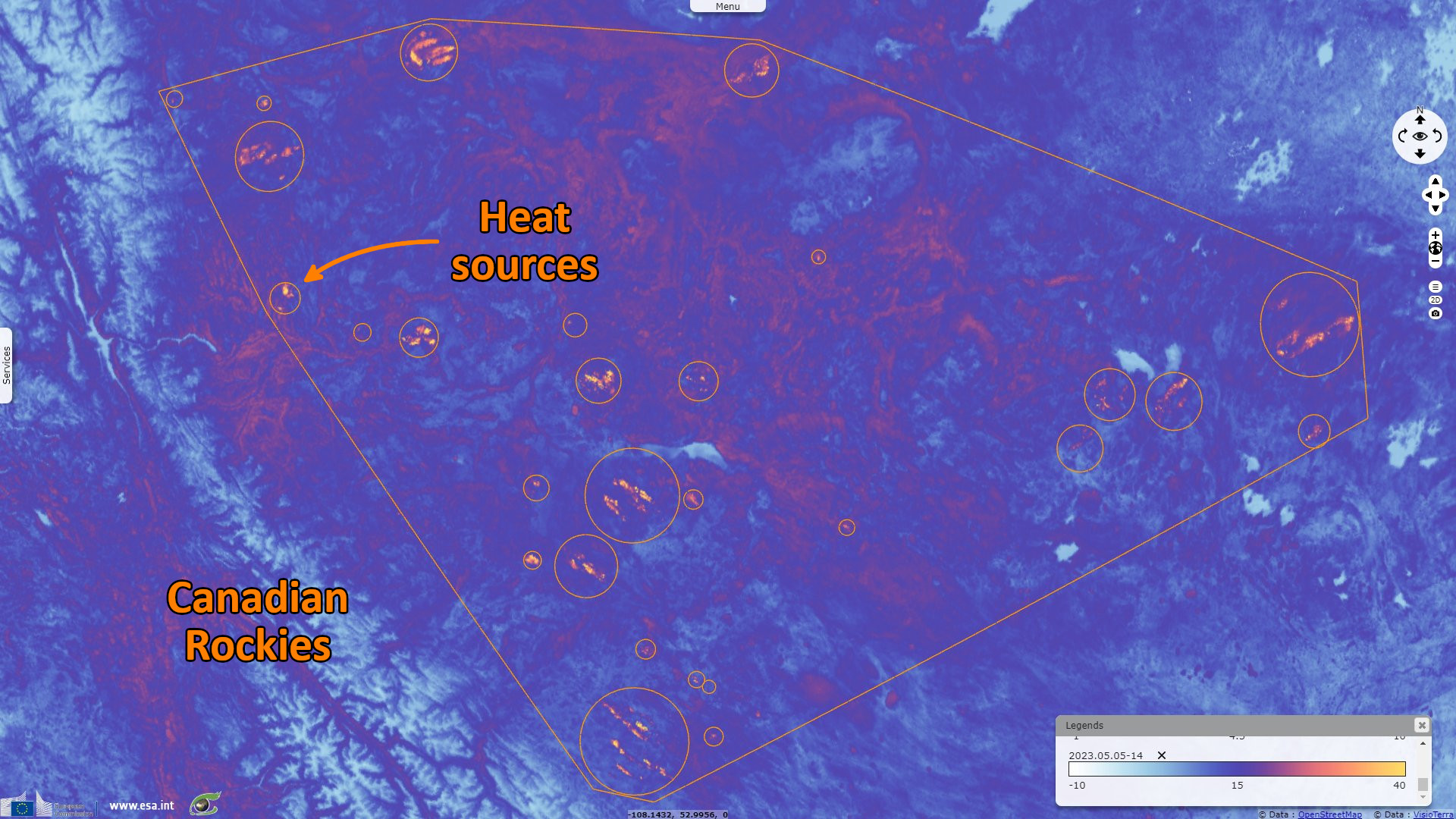Monstrous wildfires burn twice the size of Luxembourg at west of Canada
Sentinel-3 SLSTR LST acquired on 05 May 2023 from 04:15:36 to 05:56:35 UTC
Sentinel-5P TROPOMI CO & AER_AI acquired on 05 May 2023 from 19:24:17 to 19:29:17 UTC
...
Sentinel-3 OLCI FR & SLSTR RBT acquired on 14 May 2023 at 18:29:40 UTC
Sentinel-2 MSI acquired on 14 May 2023 from 18:49:19 to 19:39:01 UTC
Sentinel-5P TROPOMI CO & AER_AI acquired on 05 May 2023 from 19:24:17 to 19:29:17 UTC
...
Sentinel-3 OLCI FR & SLSTR RBT acquired on 14 May 2023 at 18:29:40 UTC
Sentinel-2 MSI acquired on 14 May 2023 from 18:49:19 to 19:39:01 UTC
Keyword(s): Land, emergency, wildfires, atmosphere, pollution, climate change, weather, drought, Canada
"Alberta, Canada, declared a state of emergency last weekend as more than 110 active wildfires burned across the province. Most of the fires are concentrated in Alberta, but nearby provinces have been battling their own flames, with multiple out-of-control wildfires scorching British Columbia and First Nations communities evacuating in Saskatchewan.", introduced Molly Enking in her article published in Smithsonian Magazine.
In order to protect locals, "more than 19 000 residents have now been ordered to escape the paths of multiple wildfires across central and northern Alberta. That is up from an estimated 16 520 people Saturday but down from last week's peak of about 30 000.", wrote Mrinali Anchan in Canadian Broadcasting Corporation on 15 May.
"There are 87 active wildfires with 24 being classified as out of control. That does not include the eight wildfires burning outside those zones. Unrelenting heat and powerful winds have made the fight difficult thus far, officials say."
"Josee St-Onge, wildfire information officer with the province, cautioned that the worst may be yet to come. 'Our peak burning period, which is when the temperatures are at their highest and the fuels are at their driest is still in front of us. We are using all of the resources at our disposal to fight these wildfires and keep people in communities safe.'"
"Alberta currently has more than 1500 wildland firefighters, heavy equipment and airtankers responding to wildfires." adds Mrinali Anchan. "Deployment of 300 members of the Canadian Armed Forces began Saturday. Close to 250 firefighters are also expected to arrive from the U.S." on 13-14 May.
As of May 15, 2023, 5318 km² have burned in Alberta wildfires, as against 8834 km² for the whole year 2019, the worst of the last ten years. A record that may be beaten in the context reminds by Molly Enking. "This fire season, which typically runs from March through October, is off to a devastating start—more than 400 fires have already been documented, an unusually high number for this early in the year".
"Research has shown that a rising number of droughts and heat waves due to global warming have been a 'key driver in increasing the risk and extent of wildfires,' according to the National Oceanic and Atmospheric Administration, leading to longer and more active fire seasons."
"The smoke from Alberta’s wildfires has reached for thousands of miles, spreading above parts of Northern Canada and the Eastern United States. Cities as far as New York and Washington, D.C., experienced hazy, smoky skies on Wednesday morning." concludes Molly Enking in Smithsonian Magazine.
















